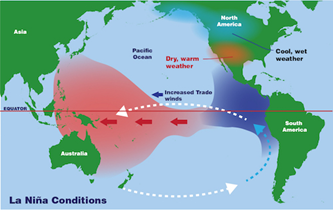

30th March 2022 (5 Topics)
Context
The India Meteorological Department (IMD) declared the season’s first heat wave and severe heat wave and the first depression in early march.
- Heat waves on land and depressions in the sea this year have started early in and around India, most probably because of an unexpected climatic anomaly which could, in turn, be linked to global warming.
About
What are heatwaves?
- A heat wave is a period of unusually hot weather that typically lasts two or more days.
- To be considered a heat wave, the temperatures have to be outside the historical averages for a given area.
- The India Meteorological Department (IMD) defines a heatwave when the maximum difference in temperature is between 4.5 and 6 degrees.
- For example, if a locality's typical temperature is 40 degrees and the actual documented temperature is 45 degrees, the area is experiencing a heatwave.
Similarly, a severe heatwave is proclaimed when the maximum temperature recorded in a location deviates from normal by more than 6.4 degrees.
|

What are the reasons?
- The reason behind early heat waves, early depressions and the weird dust storms is the continued persistence of a north-south low pressure pattern that forms over India during winters when a La Niña phenomenon is occurring in the equatorial Pacific Ocean.
- The sea surface temperatures over the east and central Pacific Ocean become cooler-than-average during La Niña.
- This affects the trade winds flowing over the ocean surface through change in wind stress.
|
The trade winds are air currents closer to Earth's surface that blow from east to west near the equator. |
- The trade winds carry this weather disturbance elsewhere and affect large parts of the world. In India, the phenomenon is mostly associated with wet and cold winters.
- Therefore, the current effect of La Niña is completely unexpected.
La Niña’s effect on other regions of the world:
- The temperatures over western Russia, down to Kazakhstan and over Pakistan, Afghanistan, all the way into Spain and Portugal were more than 10 degree Celsius warmer during February.
|
About La Niña:
Effects of La Niña
|




